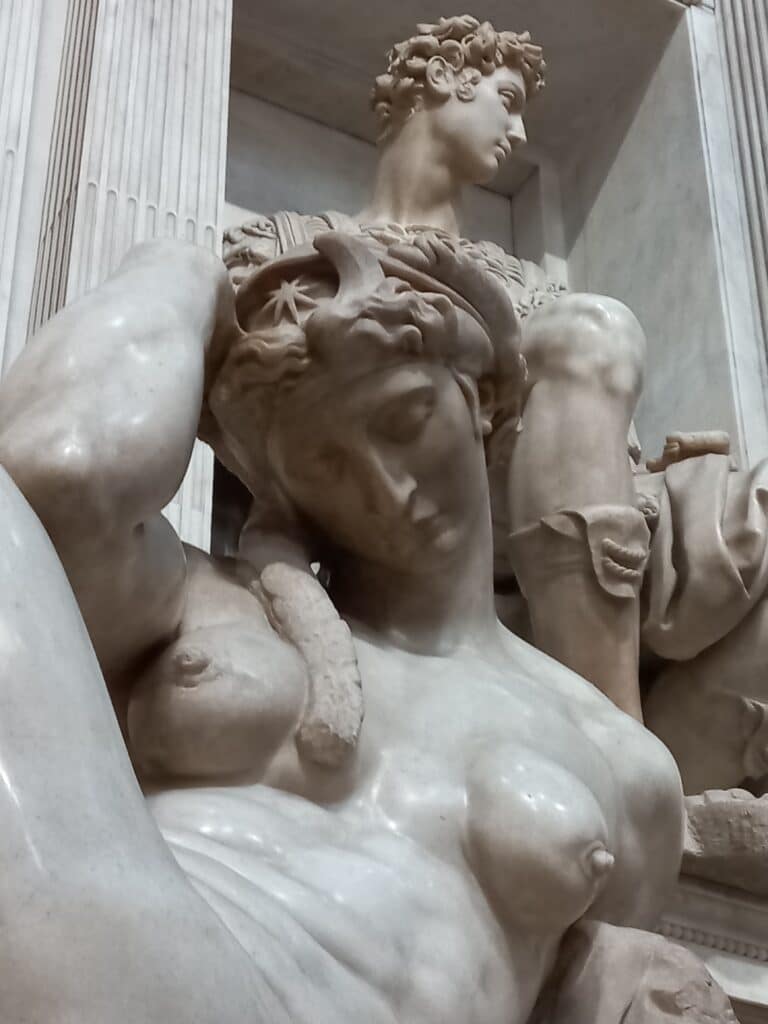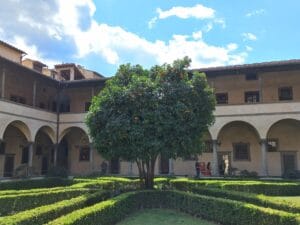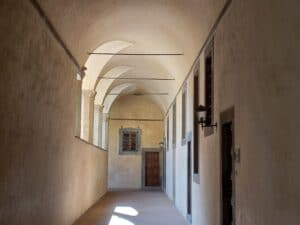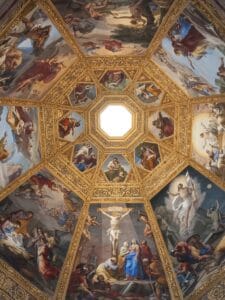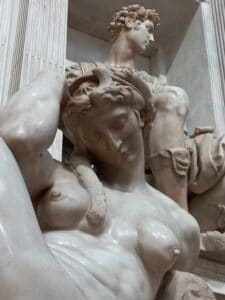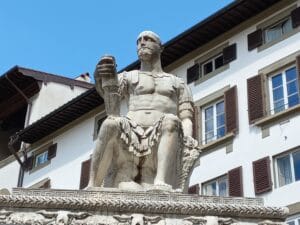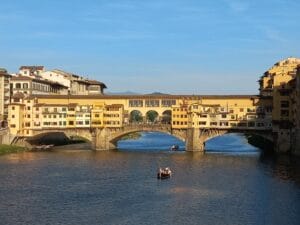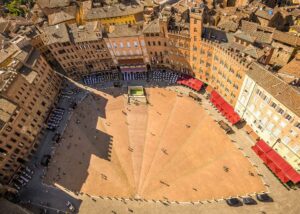San Lorenzo was the neighborhood of the Medici. The family built its first palace here and turned the basilica of San Lorenzo into sort of a private church. This is where I live and it’s really amazing to feel the tide of history while I‘m walking the streets of my “quartiere”.
We take a quick look at the Medici-Riccardi Palace which was built by Cosimo the Elder after his return from a short exile between 1433 and 1434. The palace was designed by one of Cosimo’s favourite architects, Michelozzo. Cosimo was at this point already the true leader of Florence and it’s this man who started the glorious period of the Medici dynasty which totally lasted 300 years.
Visiting the Basilica of San Lorenzo, the crypt and the cloister, which were designed by Brunelleschi, we’ll admire the clean lines of the renaissance. We’ll see the tombs of some members of the Medici in the “old sacristy” and Cosimo the Elder’s tomb in the crypt where he rests next to his friend, the artist Donatello.
The tour continues to the Medici Chapels which are among the most imposing things to see in Florence. Ferdinando I began in the late 16th century the construction of a family pantheon to contain the Tombs of the Grand Dukes of Tuscany. The large and richly decorated Prince chapel definitely gives us the sense of power and wealth of the dynasty.
Today though the Medici Chapels are perhaps most of all known for Michelangelo’s 7 sculptures in the New Sacristy.
There were the two Medici popes, Leo X and his cousin Clemence VII, who wanted to honour their fathers with a unique monument. Until this moment both Lorenzo il Magnifico (Lorence the Magnificent) and his brother Giuliano (who was stabbed in the cathedral during the famous Pazzi conspiracy in 1478 and might was the father of Clemence VII) had been resting in the San Lorenzo church.
Leo X wanted Michelangelo to create a new tomb for these two great members of the dynasty and therefore commissioned in 1520 what we today call the “new sacristy” to not confuse it with the already existing one in the church. Though Michelangelo never accomplished the commission since he moved to Rome in 1534, it’s still a great experience to visit the sacristy with Michelangelo’s unfinished statues. The sacristy was eventually completed by Giorgio Vasari and Bartolomeo Ammannati in the mid 1500s.
